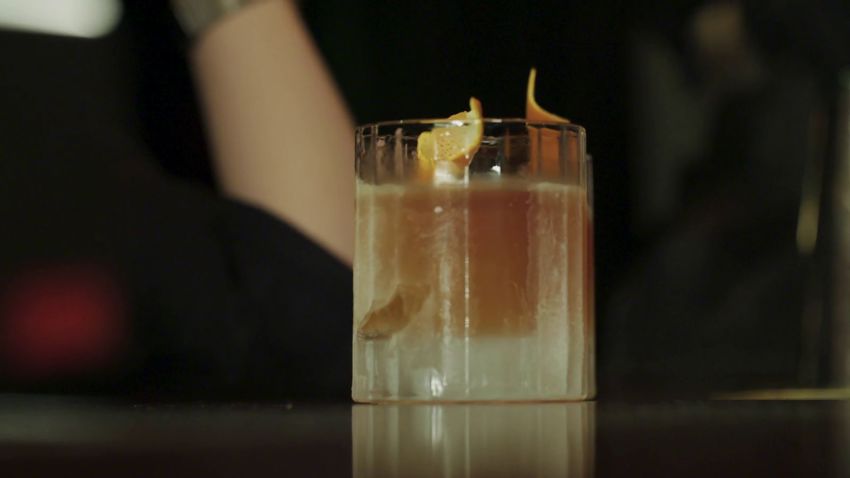
Cocktail drinkers are a profitable group of consumers. They spend £28 more on average than non-cocktail consumers out of home and there is a huge opportunity to appeal more to general spirits consumers, moving them from serves with a mixer to higher margin cocktail serves.
Central to a successful cocktail strategy is getting the pricing right. The cost of a cocktail should be directly related to the cost of the ingredients. The cost of the ingredients should fall somewhere between 18% and 24% of the price to the customer. Your prices should reflect the local area, the type of outlet and your customers. “Make pricing tiered so that there’s something for everyone”, says Karine Tillard, UK Brand Ambassador for Patrón, continuing, “Standard cocktails at one single price point that all of your customers can afford and a special feature section or premium cocktail section for those looking to mark special occasions or discover new flavours and stories”.
This tiered approach allows more consumer choice at a given price point, important when cocktail consumers choose a cocktail mostly based on flavour and price. Furthermore, these sections will allow the opportunity for customers to trade up and your staff to upsell. Staff don’t need to be an expert in cocktails to sell them, but customers are increasingly spirit savvy and increasingly turned off by perceived lack of knowledge by staff. Having a little bit of cocktail knowledge makes you and your outlet look more professional in the eyes of your customers.

“Bartender suggestion counts for everything. Ask the customer questions about their preferences and recommend great drinks that seem to fit what they are after, it will be appreciated most of the time”, says Karine Tillard, “when it comes to cocktails, the vast majority of decisions on what to have are not made until the customer is stood at the bar”.
“When it comes to cocktails, the vast majority of decisions on what to have are not made until the customer is stood at the bar”
By Karine Tillard, Patrón UK Brand Ambassador
“This level of trust is crucial for the consumer to make a repeat visit for cocktails at the venue,” says Famous Grouse whisky ambassador Joe Ellis, continuing, “If the bartender has a good story about the brand or a history of the cocktail then it keeps the consumer coming back for more”. Ensure that all of your staff have tried each of the cocktails on your list and know the ingredients. Staff should have a descriptor in mind for each cocktail such as sweet, fruity, tart, dry or boozy. An extra fact about each of the drinks will also go down well with customers, especially for cocktails with a history to tell.
As cocktails offer a high cash margin they offer the opportunity for promotions. Many places offer 2 for 1 at quieter times or a selection of cocktails at a lower mark up in order to attract customers. Once the customers are in your outlet, you can try to upsell to them. “A good way of doing this is to offer upgrades on certain cocktails”, says Joe Ellie, “for example, if a standard Old Fashioned using your house pour Bourbon costs £6.95 then you could offer an upgrade for £1.00 extra for a premium Bourbon such as Makers Mark”.
Cocktail menus are your main tool for promoting and up-selling cocktails. “It needs to be clear, concise, attractive and user-friendly”, says Auchentoshan brand ambassador Teddy Joseph. “Cocktail menu designs that group cocktails into themed sections work best,” says Karine Tillard, UK Brand Ambassador for Patrón, “find ways to bring stories to your drinks and let the customer know what flavour profiles each drink has, as well as listing drinks together that have similar purpose or occasion”.
A menu “needs to be clear, concise, attractive and user-friendly”
By Teddy Joseph, Auchentoshan Brand Ambassador
“Some venues have wonderfully designed leather bound books that contain pages and pages of cocktails with the history of each drink and some venues have very simple one-page menus with less than 10 cocktails on,” says whisky ambassador Joe Ellis, menu design “really does depend on what the concept of your venue is”. “Let the menu suit the venue”, notes Karine, “the menu should be as key a part of your bar’s look, feel and personality, as all the other details, furnishings, décor and finishing touches you have put into your outlet”.

“A good start is to have a page of classics such or at least your own twists on these”, says Joe Ellis, “consumers should be familiar with these names so will automatically feel at ease in your venue and choosing a drink, and then a page of contemporary cocktails”. Matching a cocktail range to your style of food is important, an easy example is having a Margarita and tequila cocktails if you serve Mexican food. If you do serve food, you should seriously consider adding cocktails to your dessert menu.
Beyond a menu you should “look at communicating the cocktails available with chalkboard or artwork around the venue” says Karine. High-level space above the bar and on the back bar can be used to advertise finished drinks or new products, customers focus on your back bar while waiting to be served. Menu hangers, tent cards and screens are great ways to promote your range. If you run a cocktail promotion ensure, shout about it! Most cocktail drinkers are females and our research has shown that women congregate towards the tills - focus female friendly cocktail communications here. Include pricing on displays, this should not lead the communication but will ensure that customers are not put off by the unknown.


